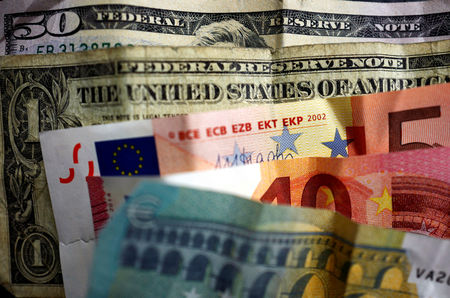
Investing.com — The British pound continued its recent decline against the dollar and the euro on Monday, driven by rising investor worries about the fiscal sustainability of Britain as gilt yields increased for the sixth consecutive day.
Sterling depreciated as much as 0.7% against the dollar, reaching $1.2103, its lowest since November 2023. It later settled with a 0.6% drop at $1.2125. In comparison to the euro, the pound was down 0.2% at 84.10 pence.
The pound has become a focus of global currency traders due to the impact of soaring global bond yields, primarily originating from the United States, on British markets. These rising yields stem from concerns about increasing inflation and a reduced likelihood of rate cuts from the Federal Reserve.
Strong U.S. labor market data released on Friday added fuel to the global bond yields, leading money markets to stop fully pricing in any rate cut from the Fed this year. Although higher yields often bolster the currency, analysts in Britain anticipate that the government may need to cut spending or increase taxes to adhere to its fiscal rules, which could potentially affect future growth.
On Monday, Britain’s 10-year gilt yield rose by 4 basis points to 4.879%, slightly below last week’s 2008 high of 4.925%. It had increased by over 24 basis points last week, marking its largest weekly rise in a year. Bond yields and prices have an inverse relationship. The 30-year yield in Britain reached its highest level in 27 years on Monday, hitting 5.472%.
This week, attention is also likely to center on British inflation data set to be released on Wednesday, which could influence the Bank of England’s monetary policy in the near term. Consumer prices are projected to have increased by 2.6% annually in December, matching November’s rate, while core CPI is expected to have eased to 3.4% from 3.5%.
Futures markets are currently pricing in around 16 basis points of easing at the BoE’s February meeting, which suggests approximately a 65% chance of a quarter-point rate cut.
This article was generated with the support of AI and reviewed by an editor. For more information see our T&C.
This post is originally published on INVESTING.



